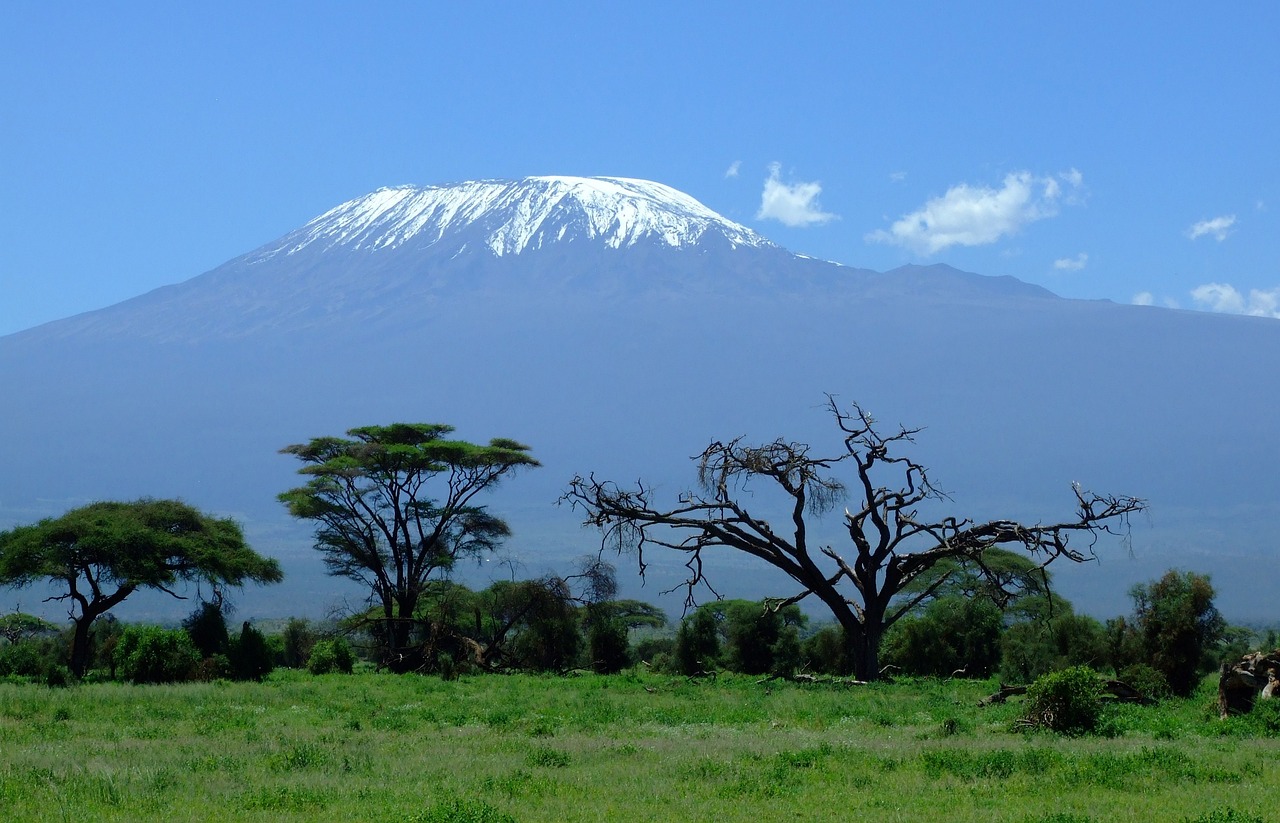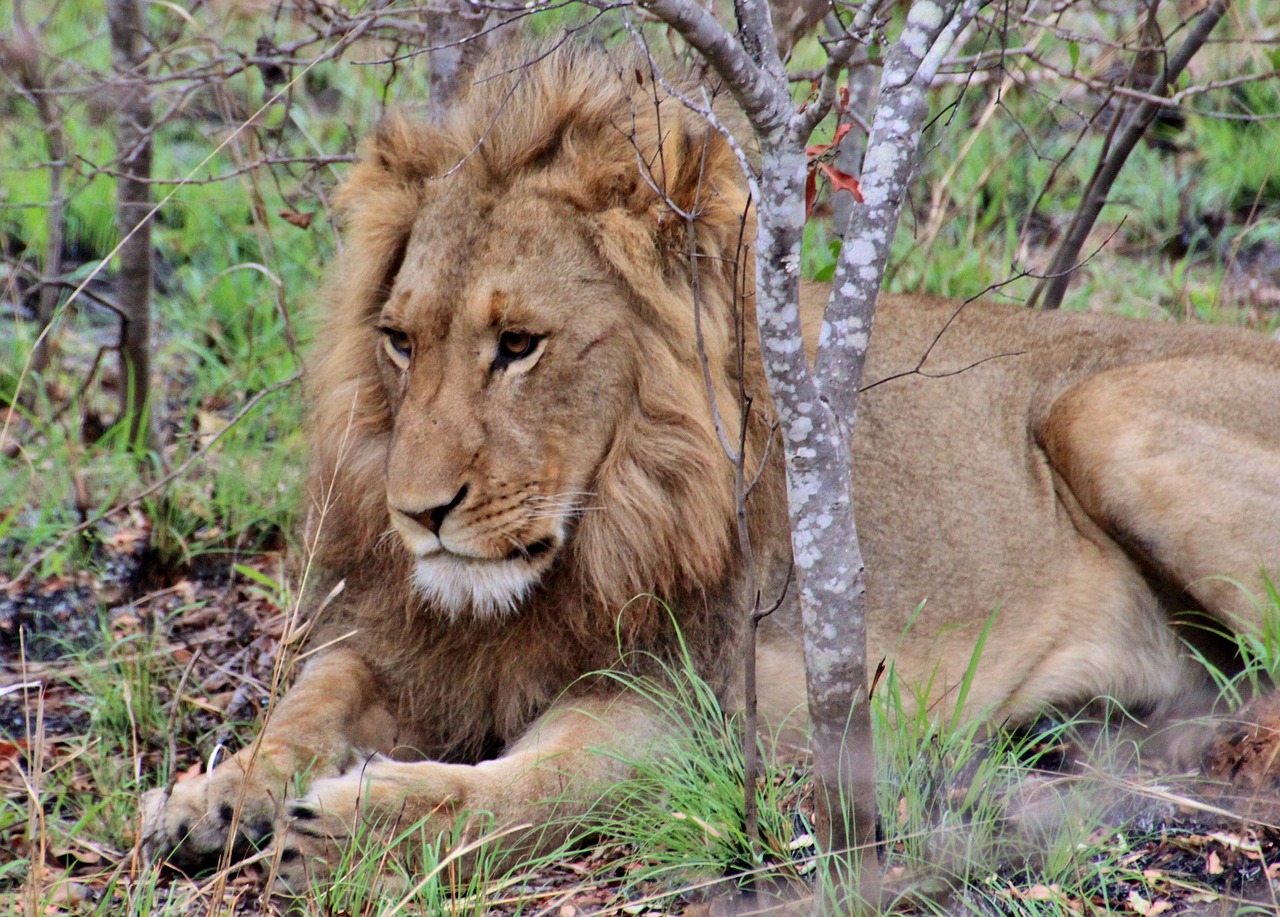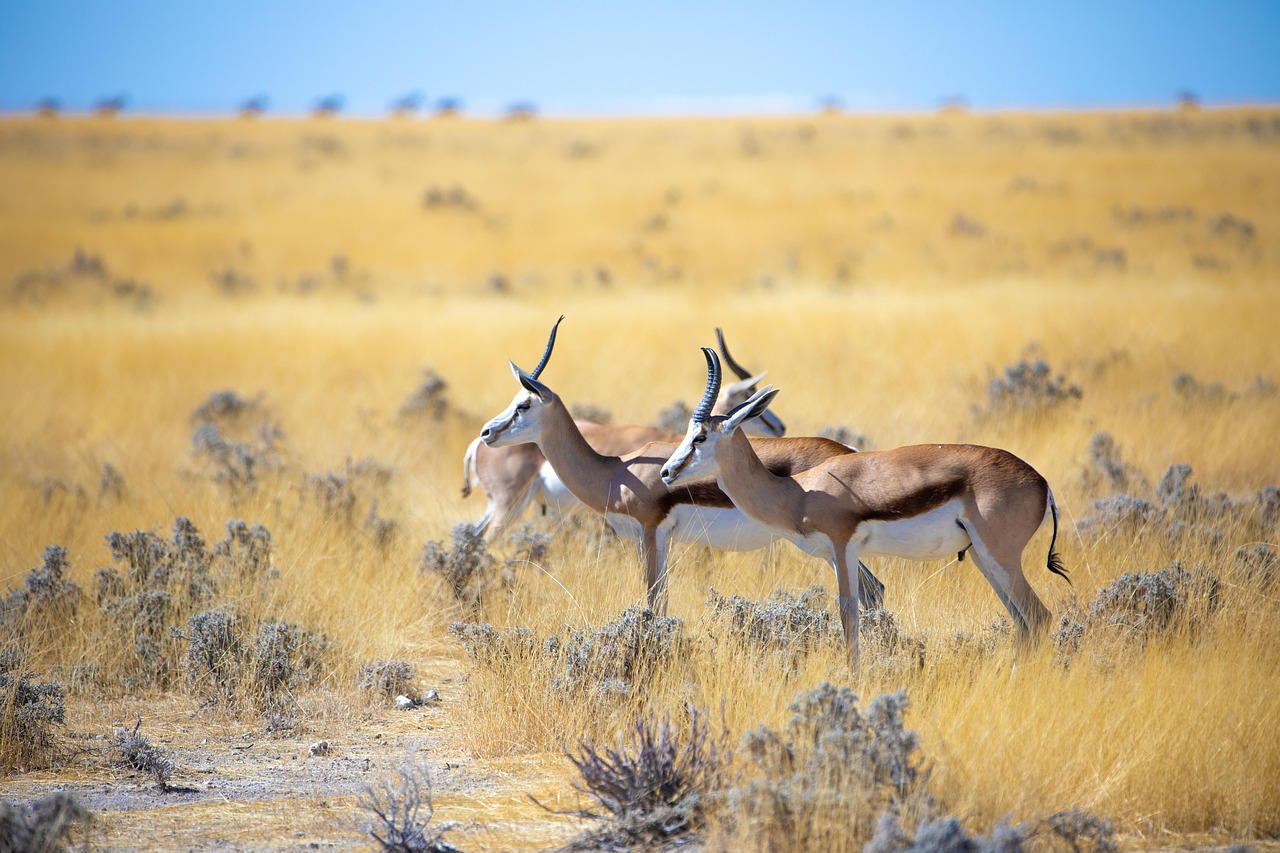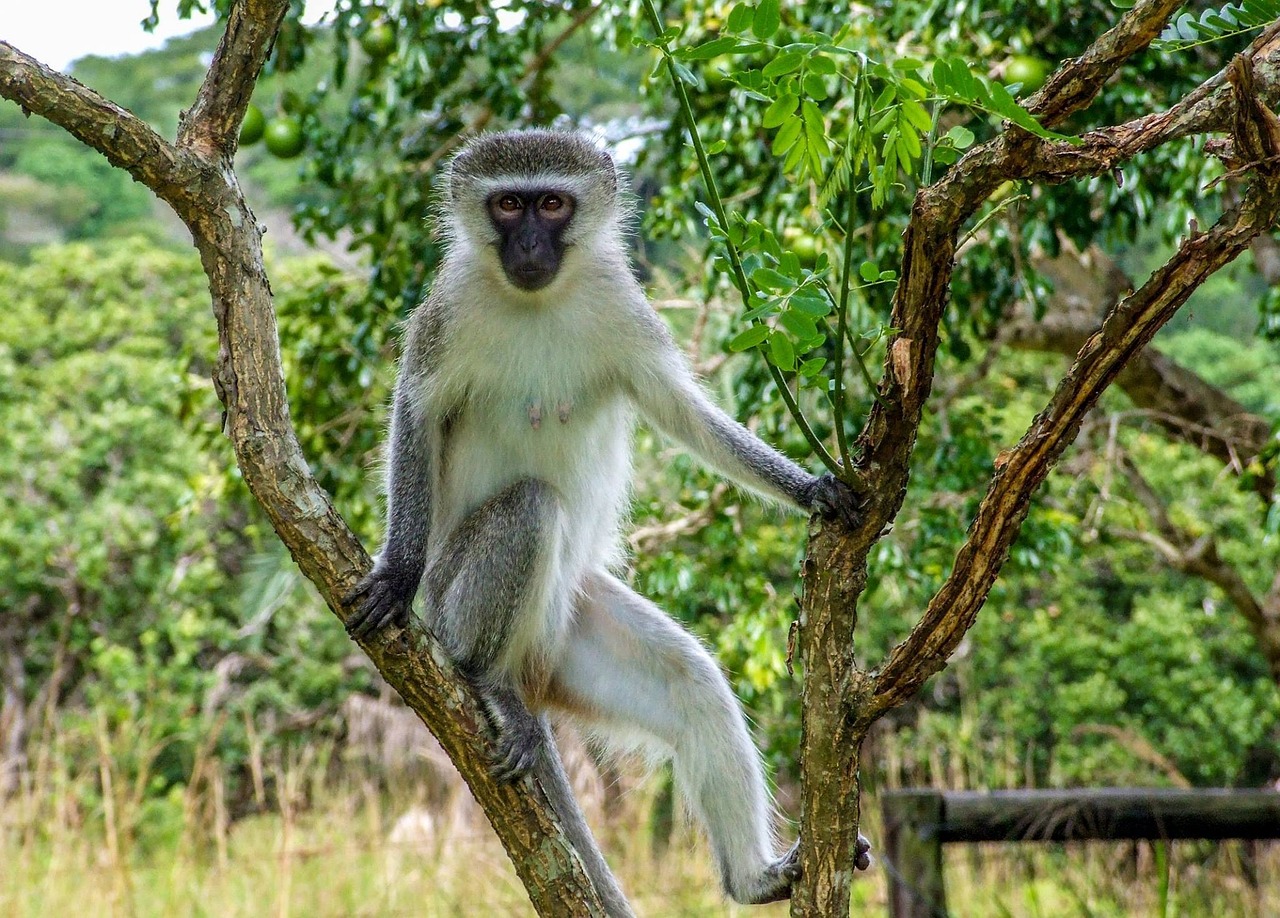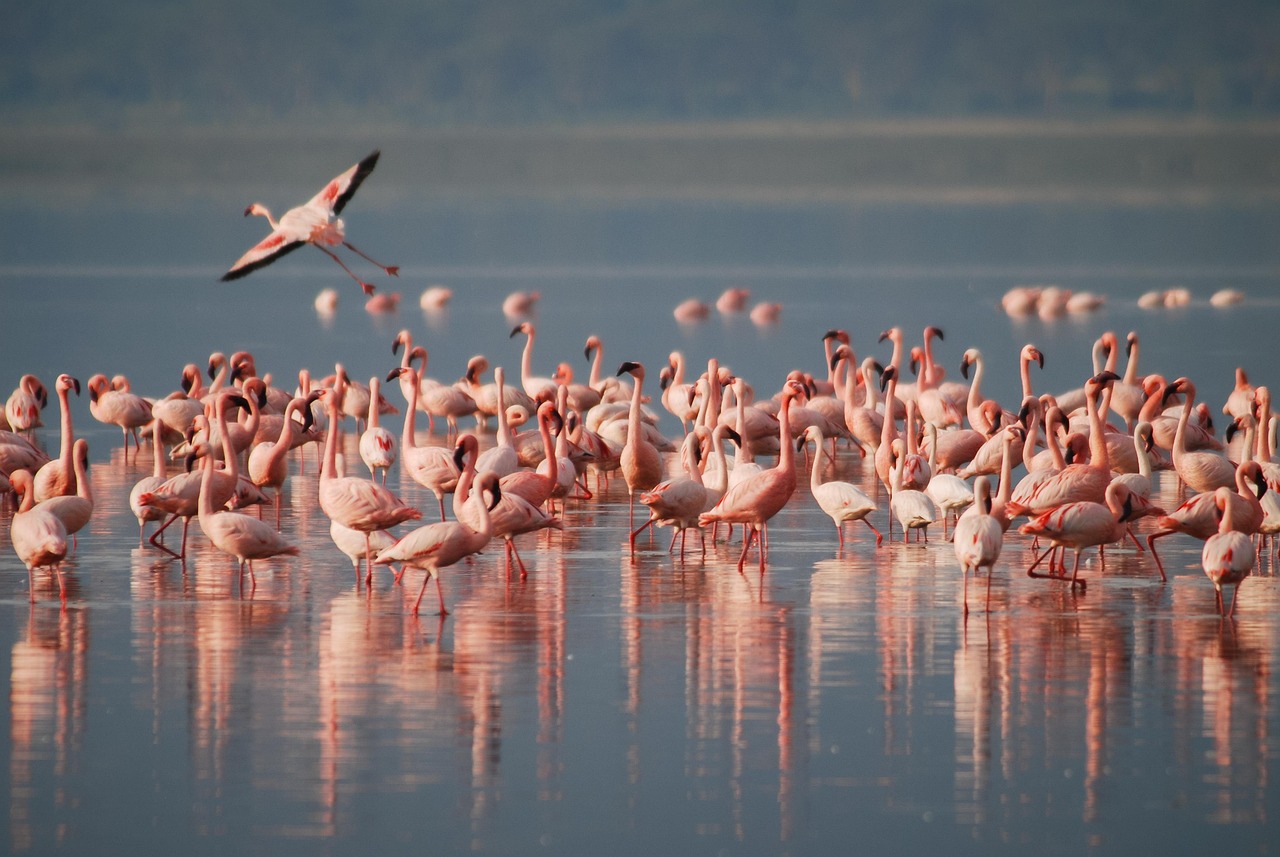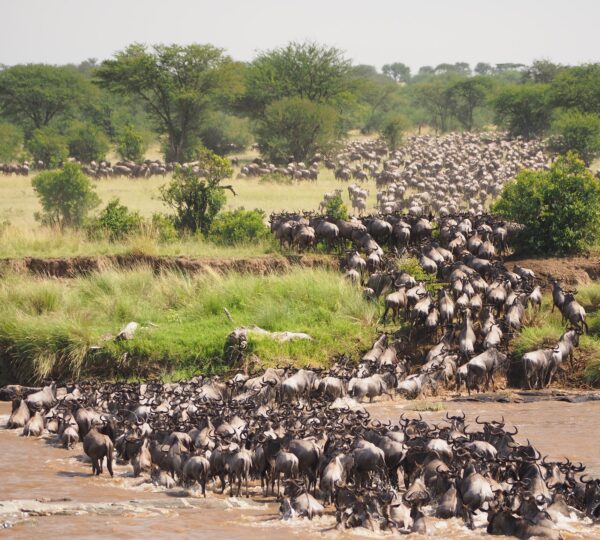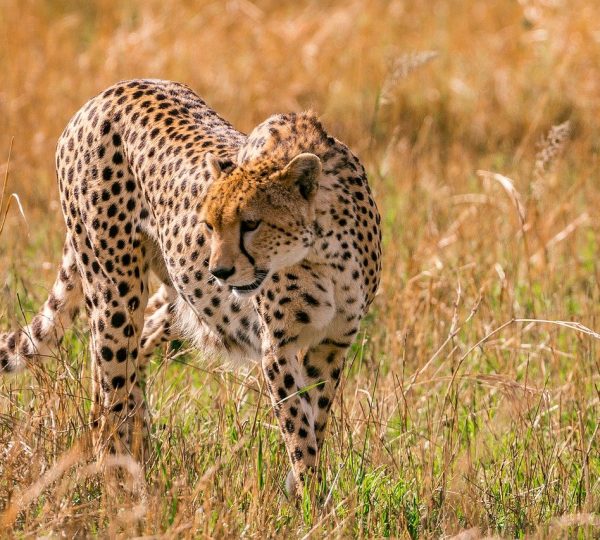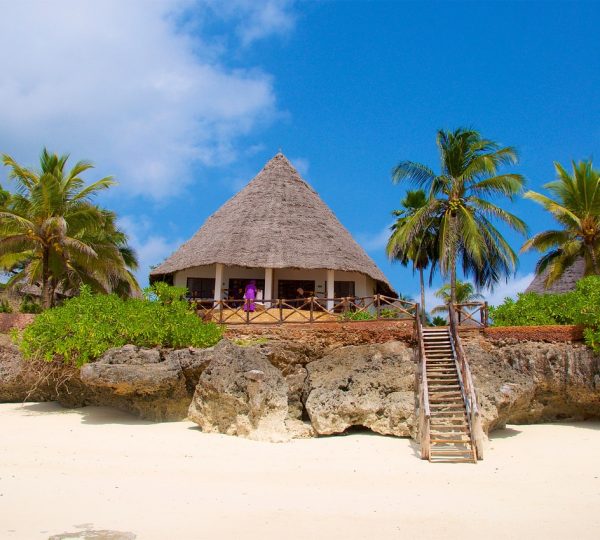TOURIST ATTRACTIONS IN Tanzania.
Distinguished as a UNESCO World Heritage Site, Serengeti National Park stands as the largest expanse of protected land in Northern Tanzania, encompassing a vast area spanning 14,763 square kilometers. Renowned for hosting the world’s most extensive annual animal migration, where millions of wildebeests, accompanied by numerous zebras, as well as smaller groups of Thomson’s gazelles and elands, traverse the Mara River into Masai Mara National Park. The park also boasts the most significant lion population in Africa and teems with diverse game and wildlife.
Throughout the entire year, the Serengeti provides incredible opportunities for observing wildlife. The months of June and July stand out as prime times to witness the migration and the potential spectacle of a Grumeti River crossing. The more renowned river crossings at the Mara River are typically observed around September in the park’s northern reaches. February emerges as the optimal month for observing wildebeest calving. The dry period spanning from June to October offers unparalleled chances for general wildlife viewing.
Situated just beyond the well-trodden path of the popular northern Tanzania Safari Circuit, Tarangire National Park occupies a space amidst the expanses of the Masai Steppe to the southeast and the surrounding lakes within the Great Rift Valley to the north and west. This park holds the distinction of being the sixth-largest National Park in Tanzania, covering a sprawling area encompassing 2,600 square kilometers.
Noteworthy for its abundant elephant population and iconic baobab trees, Tarangire is a destination frequented by those seeking a unique wildlife experience. Travelers who explore the park during the dry season from June to November can anticipate encountering substantial gatherings of zebras, wildebeests, and cape buffalos. Among the assortment of resident animals, waterbucks, giraffes, dik diks, impalas, elands, Grant’s gazelles, vervet monkeys, banded mongooses, and olive baboons are commonly spotted. Predators in the Tarangire ecosystem encompass lions, leopards, cheetahs, caracals, honey badgers, and African wild dogs.
At the northern edge of Tarangire, the permanent River Tarangire flows, acting as a vital lifeline for the park, particularly during the arid months when much of the region becomes parched. The river stands as the defining feature of this landscape, bestowing its name upon the park. A series of expansive swamps transform into verdant plains as the dry season progresses in the southern part of the park.
Located in the northern part of Tanzania, Lake Manyara National Park is 126 kilometers west of Arusha Town. Designated as a national park in 1960, Lake Manyara National Park is home to a diverse range of stunning landscapes, including marshland, dense acacia woodland, and steep rocky slopes.
The park Centres around its eponymous alkaline lake whose surface covers two thirds of the park’s total area, a key habitat for hundreds of bird species.
Lake Manyara National Park is famous for housing vast flocks of flamingos, water buffaloes, zebras, antelopes, tree-climbing lions, over 400 bird species and one of the highest concentrations of elephants in all of Tanzania.
Like all of Tanzania’s national parks, Lake Manyara’s peak season is during the dry months from July to September.
Hot springs can be found in the south of the park, and the park is bisected by 2 rivers, the Mto wa Mbu River and the Endabash River.
The short dry season from mid-December to early March is also a good time to visit, but the temperatures can get very hot during this period.
Although you will see wildlife during the wet season, it will be more difficult to spot animals amongst the luscious vegetation. In the dry season, animals are drawn to the few remaining water sources and wildlife viewing opportunities are excellent.
Recognized as one of Africa’s Seven Natural wonders, the Ngorongoro Conservation Area is a safeguarded region and a UNESCO World Heritage Site situated in Ngorongoro District, positioned 180 km to the west of Arusha City in the northern part of Tanzania, within the geological expanse known as the Crater Highlands. The name of this area is derived from the Ngorongoro Crater, a large volcanic caldera nestled within it.
The Conservation area comprises a large chunk of the southern Serengeti’s short-grass plains and the Ngorongoro Highlands..
Within the Crater, an exceptional variety of animals thrives within their distinct habitats, constituting a remarkable concentration of wildlife. Additionally, the conservation area encompasses the Olduvai Gorge, a site of immense significance in the realm of paleoanthropology, holding a position as one of the most important sites globally.
Situated in the northeastern part of Tanzania lies Kilimanjaro National Park, an area designated as a UNESCO World Heritage site and one of Africa’s seven Natural Wonders. This park spans an approximate expanse of 75,575 hectares and encircles the largest freestanding volcanic mass globally, including the towering peak that ranks as Africa’s highest mountain. From its base at 4,877 meters above the surrounding plains, the mountain ascends to a majestic height of 5,895 meters at Uhuru Peak. This peak, an integral part of the Kibo cone, forms one of the mountain’s three volcanic cones.
With its peak adorned by a snow-capped crown, Kilimanjaro stands as an unparalleled natural spectacle, towering above its surrounding environment and embraced by a ring of mountain forest.
Mount Kilimanjaro National Park presents an astonishingly varied array of habitats as it climbs from the pastures and bushlands of the indigenous Maasai territory. Here, the melting waters from the summit give life to a luxuriant belt of tropical forest, home to some of the healthiest herds of elephants on the entire continent. Within this realm, elephant herds roam freely with their offspring, Alongside these majestic creatures are colossal, aged tuskers .Among a supporting cast of antelopes and primates, you might even have the fortune to spot the endangered Abbott’s duiker.
The park is nestled at the base of Mount Meru, one of Africa’s most stunning volcanoes and the fifth tallest peak on the continent. It’s conveniently located just a short drive from Arusha city, making it an excellent choice for day trips. Arusha National Park showcases a wide range of landscapes, from expansive grasslands and rainforests to acacia woodlands and even higher up, alpine vegetation on Mount Meru’s upper slopes.
Covering a bit more than 200 square miles, Arusha National Park has abundant wildlife, boasting the world’s largest population of giraffes. This park is home to many Cape buffaloes, elephants, hippos, and zebras. Every now and then, you might catch a glimpse of a lion or a leopard during a game drive.
Arusha National Park offers exciting activities such as game drives, canoeing, hiking Mount Meru, and walking safaris. It’s one of the limited national parks in Tanzania where you can embark on walking safaris. Walking safaris provide a fantastic alternative to the typical safari experience. Recently, park authorities have also allowed walking safaris in other parks like Tarangire National Park, Lake Manyara, and certain bordering areas of the Serengeti National Park.
Nestled in the southern region of Tanzania, Ruaha National Park is situated in western area of Iringa standing as the largest protected space in both Tanzania and East Africa.The park’s name originates from the Great Ruaha River, which flows through its southeastern region and serves as a magnet for a diverse array of wildlife.
Ruaha is an integral component of the broader Rungwa-Kizigo-Muhesi ecosystem, spanning across 45,000 square kilometers. This ecosystem encompasses the Rungwa Game Reserve, the Kizigo and Muhesi Game Reserves, and the Mbomipa Wildlife Management Area.
The Rungwa-Kizigo-Muhesi ecosystem beautifully amalgamates elements of Southern and East African natural landscapes.
In 1910, during the era of German colonial rule, the Saba Game Reserve was established, and later in 1946, it was renamed the Rungwa Game Reserve under British colonial administration. In 1964, the southern segment of this reserve attained the esteemed status of a national park.
Ruaha National Park presents a captivating and diverse terrain, featuring expansive savannahs, a meandering river that lures a multitude of wildlife, and mountainous terrain in the southern and western sections. This park also serves as a sanctuary for rare species, including wild dogs, cheetahs, and leopards.
The Selous Game Reserve stands as the largest safeguarded wildlife area across the African continent, covering a sprawling expanse of 54,600 square kilometers. This expansive terrain encompasses a diverse wilderness featuring forests, grassy plains, mountains, and open woodlands. The reserve’s name honors Frederick Selous Courtney, a notable hunter and explorer. Established in 1922, it achieved UNESCO World Heritage status in 1982 due to its abundant wildlife and untouched natural environment.
Positioned in the southern part of Tanzania, along the southern route of the Tanzanian safari circuit, the Selous Game Reserve offers a distinct escape from the bustling tourist crowds commonly found in the northern safari destinations like Serengeti. Instead, it presents an extraordinary wildlife encounter.
River Rufiji, the country’s largest river, courses through the heart of the Selous Game Reserve, creating an intricate network of swamps, channels, and lakes that shape a truly unique ecological system. The reserve is divided into two primary sections by this river: the northern and southern Selous.
The Northern Selous, which makes up only about 5% of the reserve’s total area, has been designated exclusively for photographic safaris, with hunting strictly prohibited. On the other hand, the southern Selous is divided into several hunting blocks, each covering approximately 1,000 square kilometers. However, it’s crucial to emphasize that we neither operate nor support wildlife hunting activities.
Within this national reserve, you’ll find a diverse array of mammal species and over 455 bird species. Among the unique inhabitants are puku antelopes, African wild dogs, and sable antelopes. Notably, the Selous was once home to a substantial elephant population, but due to rampant poaching, their numbers have significantly dwindled.
Mikumi National Park stands as Tanzania’s fourth-largest national park and holds the distinction of being the most accessible from Dar es Salaam. This makes it an ideal safari destination, particularly for those with limited time available. Even a two-day visit or more allows you to immerse yourself in the beauty of Mikumi National Park. Ever since a highway was established, linking the park to Dar es Salaam, Tanzania’s busiest and largest city, Mikumi National Park has gained significant attention as a tourism hotspot within the country.
Within the heart of the park, a diverse array of wildlife is easily observable, perfectly suited for captivating game drives.
Gombe Stream National Park is situated along the western boundary of Tanzania and the Congo. Established in 1968, it stands as one of Tanzania’s smallest national parks, encompassing a protected area of merely 35 square kilometers nestled among the hills on the eastern edge of Lake Tanganyika. Renowned for its off-the-beaten-path chimpanzee encounters, this park is an attraction of choice for those seeking a unique experience.
The Gombe Stream National Park is renowned as the site where Jane Goodall conducted pioneering research on chimpanzee populations. Her study unveiled the intellectual and emotional complexities of chimpanzees. Creating a research station in Gombe, she sought insights into our closest relatives’ behavior. Her dedicated tracking of chimpanzee troops, especially the Kasekela community, led to her gradual acceptance by one group, providing rare and intimate insights into their society.
In 1967, the Gombe Stream Research Center (GSRC) was established to coordinate ongoing chimpanzee research within the park. Mainly run by trained Tanzanians, GSRC has engaged in the longest-standing field study of an animal species in their natural habitat.
Gombe’s remarkable biodiversity has fueled its growing popularity as a tourist destination. In addition to chimpanzees, the park is home to various primates such as beachcomber olive baboons, red colobus monkeys, red-tailed monkeys, blue monkeys, and vervet monkeys. Notably, red-tailed monkeys and blue monkeys interbreed within this region. With over 200 bird species and even bushpigs, Gombe boasts a diverse range of inhabitants.


